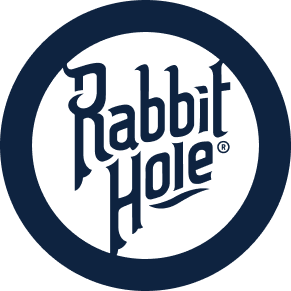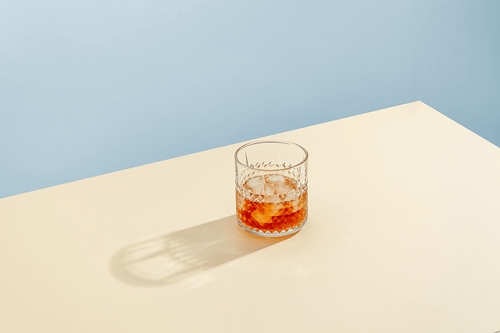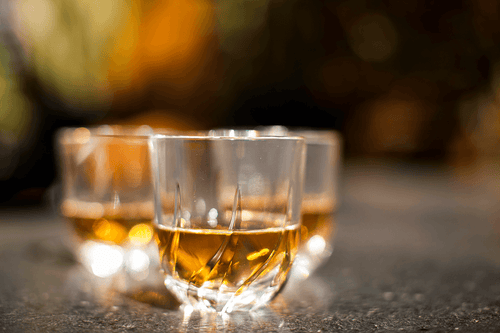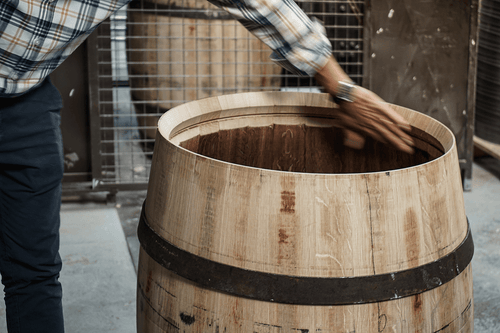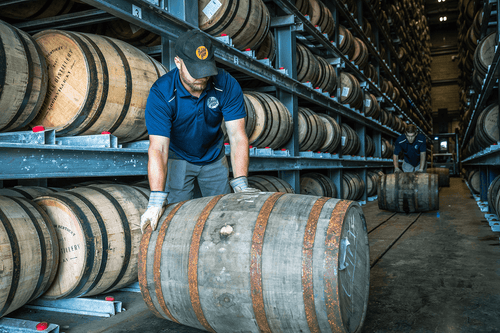Bourbon Barrel 101: Aging And Construction
BOURBON BARREL 101
AGING AND CONSTRUCTION
Bourbon barrels play a critically important role in the flavor of finished whiskey. Understanding all the unique elements of the barrel will give you a better idea of where all those flavorful notes come from and what goes into that distinctive taste in the bottle....

Barrel Material
All bourbon ages in American white oak barrels. However, each tree is distinct, so these barrels still have significant variations. Oak trees are typically between 70 and 100 years old when harvested. Over that lifespan, the tree experiences a distinctive set of circumstances that influence the wood's cellulose, hemicellulose, and lignin. Things like topography, rainfall, climate, and soil all impact the characteristics of the wood.
Each harvested stave has additional variations in grain and porosity. The cutting method impacts the wood structure, while the location of the board in the tree creates variations in extractable levels of volatiles. During the seasoning process, the staves are exposed to another set of variants, including temperatures, humidity, and microorganisms. The temperature and duration of kiln drying alter the tannin content and biomass composition. Even the number of barrel staves matters, as this impacts oxygen diffusion.
Barrel Char
The interior of bourbon barrels is set on fire in one of the last stages of the production process to produce an effect known as char. Bourbon must come from charred barrels; however, there are no requirements on the level of char. The char level is a key differentiator that impacts the flavor of the finished bourbon. Burning the wood breaks it down, so it can release more of its distinctive flavors while the bourbon ages.
Chars typically range from level 1 to level 4. A level 1 char results from a quick 15-second burn, and this light charring provides a slight sweetness. A level 2 char takes 30 seconds and offers coffee, spice, and vanilla notes.
Level 3 and level 4 chars are most common for bourbon barrels. A level 3 char results from a 35-second burn, imparting deeper vanilla flavors and rich caramelization. On the other hand, a level 4 char requires a 55-second burn. This deep char delivers a smoky flavor that provides an intricate contrast to the lighter vanilla notes.
Toasting
Barrel toasting / toasted barrels
Toasted bourbon barrels are exposed to less extreme temperatures than barrels charred in a fast burn. The toasting process exposes the interior of the barrel to a smaller flame for a longer period of time. Think of it similar to toasting a marshmallow vs letting it catch fire. This toasting process allows the heat to penetrate deeper into the wood. It also allows the distillate to pull more sugars, congeners, and notes naturally occurring deep within the wood.
Bourbon Aging
The length of time a bourbon spends in the barrel impacts the finished flavor. There is no minimum aging time for bourbon, but any product aged under four years must disclose this fact on the label. Therefore, if the age isn't mentioned on the label, it's at least four years old.
It takes about four years for the compounds in the bourbon barrel to overpower the naturally occurring grain flavors in the bourbon. All bourbon is made from at least 51% corn mash, while the remaining 49% may include malted barley, wheat, or rye. These flavors are more prevalent in a younger whiskey, imparting a distinctive taste of toasted rye bread, cornbread, or wheat flakes. The longer bourbon remains in the barrel, the more the barrel's distinct flavors will saturate the bourbon.
Previous Uses
For whiskey to qualify as bourbon, it must age in a brand new barrel, meaning you cannot make bourbon in a barrel previously used for any other purpose as you can with whiskey. If you enjoy the distinctive taste of a whiskey from a barrel previously used port wine or rum, you'll have to exit the bourbon market, which focuses on a purer flavor. The exception here is once a bourbon is aged as per legal requirements, it may be “finished” in barrels used for other purposes. For instance, one of the most sought after bourbon expressions is one which has been finished in a P.X. Sherry cask.
Barrel Storage
The method of storage plays a role in bourbon flavor as well. There are two primary options used for bourbon barrels.
Rickhouses
Rickhouses store bourbon barrels horizontally in racks (also known as bricks), typically three barrels high. This storage method provides plenty of air circulation, as the barrels maintain adequate space between one another. Rickhouses typically lack climate control, which means that barrels are subject to the effects of the local climate.
In an area like Kentucky, where 95% of bourbon is produced, this includes warm summers with a daytime average of 87 degrees Fahrenheit and freezing winters with average lows around 23 degrees. These temperature fluctuations are beneficial for bourbon, as they drive the whiskey into the wood and speed the maturation process.
Rickhouses provide great benefits for the aging process, but they're not the most efficient use of space or labor. Storing barrels in ricks requires a large warehouse and a great deal of manpower. The barrels must be moved individually by skilled workers. This method of operation isn't suited to all bourbon makers.
Palletized Warehouses
Palletized warehouses make better use of the available space in a warehouse by packing the barrels more closely together. In a palletized warehouse, the barrels are stored vertically on pallets that are stacked on top of one another. Workers can use forklifts to move the pallets, reducing the manpower needed to manage the facility.
Though palletized warehouses make great use of the available space, they offer less airflow for the barrels. To combat this issue, the facility must provide excellent ventilation and massive industrial fans for better airflow. And to ensure every barrel gets adequate exposure to heat changes, many palletized warehouses have artificial climate control, which is another added expense. Palletized warehouses are more commonly used for younger bourbons.
Number of Barrels
Most standard bourbons come from many different barrels. Once the bourbon has finished aging, it's diluted with water to a minimum of 80 proof. Each batch contains bourbon withdrawn from various barrels. Blending these bourbons helps to homogenize the flavor, so you'll always enjoy the same taste when you open a bottle of your favorite bourbon. Most major distillers blend hundreds (if not thousands) of barrels together.
Small batch bourbon is when only a hundred or so barrels are mixed. Many times, a distiller or brand will advertise this information, however – many simply say “small batch” bourbon. There really is no law governing what “small batch bourbon” means, so it is mostly left up to interpretation.
Extremely small batch bourbon means the bourbon you are drinking likely came from a small number of hand-selected bottles. Some distillers use as few as fifteen barrels to blend. The reason why this matters is simple. The smaller the initial barrel count, the easier it is to control quality and especially consistency. The added benefit is the ability to notice nuances between individual bottles; one may have a bit more vanilla or sweetness than one purchased week prior. It is a new experience every time, but not in terms of quality. In extreme small batch bourbon, quality is the byproduct.
Single barrel bourbon comes entirely from one barrel, so you'll enjoy all the distinctiveness unique to that barrel. Everything from the particular tree used for the wood to the storage location in the warehouse will come through in the bottle, delivering a one-of-a-kind experience.
By understanding the basics of bourbon barrels, you can begin to identify some unique elements of each bottle's flavor profile. Learning more about a brand's production methods can help you anticipate what you'll get in the finished product to identify the bottles that will appeal to you the most.
Parts Of A Bourbon Barrel
Bourbon barrel volume and dimensions
A typical bourbon barrel or “cask” is a large wooden vessel usually constructed from American white oak. Since they are handmade, there are slight variations in finished size/dimensions. However, the most common measurements are:
- Barrel Volume: 200-250 liters (53-66 gallons) the average is 53 gallons.
- Barrel Height: 86cm (34-36 inches)
- Barrel heads (top/bottom): 53cm (21 inches) diameter.
- Barrel Weight: (empty) about 45kg (100 lbs)
- Barrel Weight full: 225 kg (500 lbs or more)
- Number of staves: 31-33
- Barrel Diameter: (non-bilge) 21 inches
- Barrel Bilge circumference (widest part): 26 inches
- Steel hoops: six
- Barrel Fasteners: steel rivets (usually branded by cooper/maker)
- Barrel Stave width: 3-5 inches each
- Barrel Stave height: 35 inches length
- Barrel Bung Hole diameter: 2 inches
Bourbon Barrel Parts
- Barrel Stave: A narrow slat of wood (usually American white oak) with a beveled edge which fit together to create a leak-resistant vessel for aging bourbon.
- Barrel Bilge: The center bulge, or widest diameter of a bourbon barrel.
- Barrel Bilge hoop: Iron band located in the center of the barrel; holding staves together at the widest part.
- Barrel Head hoop: Metal/iron band locates closest to top and bottom of bourbon barrel.
- Barrel Quarter hoop: Metal/iron band located between the head hoop and bilge hoop.
- Rivet: Steel fasteners that hold the hoops together with force by attachment from hoop beginning to end.
- Barrel Cant: Machined/tooled slope carved into the barrel head.
- Barrel Head: barrel lid which fits snugly into the top and bottom of a bourbon barrel; thereby sealing to for aging.
- Barrel Chime: The beveled edge for connecting bourbon barrel staves, thereby holding the barrel heads in place.
- Barrel Croze: A small groove carved at both ends of a stave of a cask into which the head fits is the
- Barrel Stave joint: A tongue-and-groove type joint which interconnects barrel staves along their longest sides. Forming a water-tight connection, these joints remain flexible yet self-seal.
- Barrel Bunghole: Two-inch hole by which a bourbon barrel is filled and emptied. It is sealed with a bung which is a wooden puck that fits tightly into the bunghole.
There are many facets to the bourbon aging process. From the construction of the barrel of the preparation before the bourbon enters – there is a great deal of science, skill and magic required to end up with a premium bourbon.


















